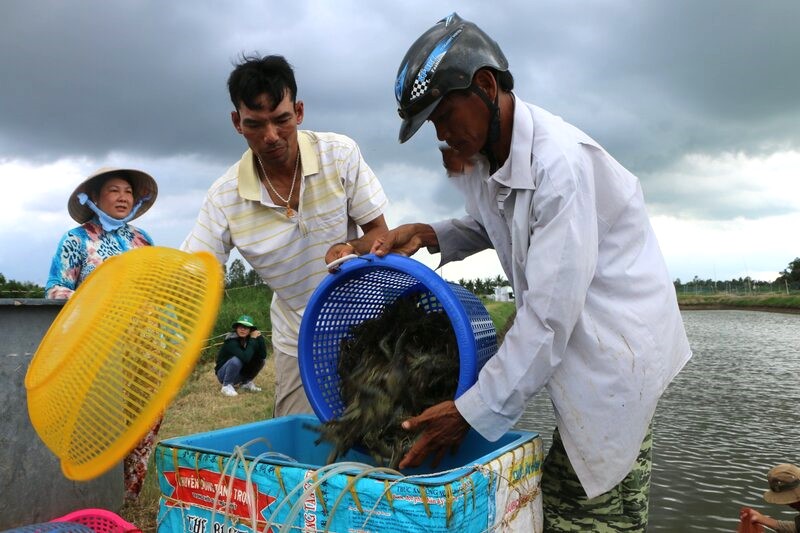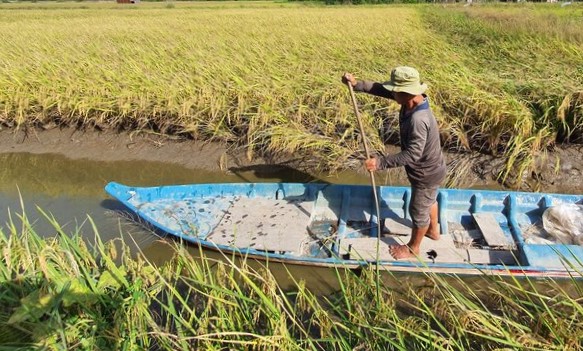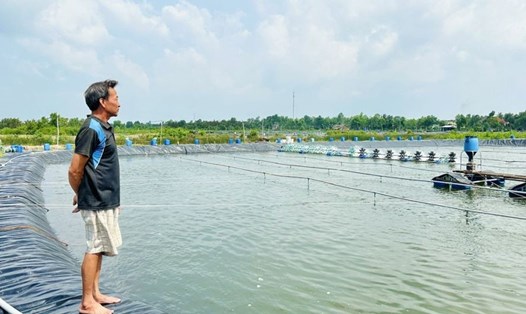Shrimps have many difficulties
One of the difficulties that causes the cost of shrimp production to increase is the cost of feed. The price of shrimp feed in Vietnam is often higher than in other shrimp farming countries, due to the complete dependence on imported raw materials and the feed market is mainly determined by foreign brands.
The price of animal feed always tends to increase and does not decrease with economic fluctuations. Meanwhile, animal feed products from countries such as Thailand and Ecuador have abundant raw materials and more competitive prices. At the same time, large shrimp farms in these countries do not have to bear additional costs or go through many intermediaries like in Vietnam when buying animal feed.

Along with food, the quality of the breed is also the reason for the increase in production costs for a long time.
There are currently about 2,500 hatcheries in Vietnam, widely dispersed with many small hatcheries and a few large commercial hatcheries. Of concern is that the survival rate of shrimp larvae when released from hatcheries in Vietnam is only 35 - 40%, much lower than that of competing shrimp farming countries.
Struggling with the problem of shrimp production costs, many shrimp farming households are always short of capital, so in addition to buying feed, medicine and aquatic materials on credit at higher prices, farmers do not have money to invest in developing infrastructure to serve shrimp farming according to the modern industrial model to reduce production costs. Along with that, the current network of traders is handling about 70% of the total shrimp production. The multi-level and decentralized network of traders has created complexity in tracking the origin of shrimp from farm to factory and increased production costs due to going through too many intermediaries.
More worryingly, the environmental quality in aquaculture is gradually deteriorating and many places are heavily polluted. Water quality is also polluted and depleted, leading to increased water treatment costs and reduced farming efficiency...

Risk of falling behind
All these difficulties and shortcomings are the reasons for the high production costs of Vietnamese shrimp in general and in Bac Lieu in particular. Therefore, if there are no fundamental solutions to resolve these challenges, the country's shrimp, including Bac Lieu shrimp, will be underdeveloped and even fall behind.
The goal of building Bac Lieu into the capital of the shrimp industry will also be difficult to achieve when the output, scale and competitiveness of shrimp are increasingly weak. Therefore, a "push" is needed to restructure the shrimp industry as well as promote the effectiveness of the linkage in the product chain from breeding, production to consumption.
Mr. Pham Hoang Minh - Director of the Management Board of Bac Lieu High-Tech Shrimp Development Agricultural Zone - said that in order for Vietnamese shrimp to increase its competitiveness in the market, it is essential to complete the shrimp industry value chain through promoting production linkages.
According to statistics, the total annual supply of shrimp is estimated at over 1 million tons of all kinds, which are distributed directly to farmers by companies that usually go through 2 levels of agents. Therefore, the selling price to consumers is 20-30% higher than the factory price. This is the reason why the production cost of shrimp for Vietnamese farmers is higher than that of other countries that invest in feed directly from the factory to the shrimp fields.
In addition, to reduce production costs in shrimp farming, one of the immediate solutions is to build strong production links between businesses and shrimp farmers or businesses with cooperatives, to gradually reduce intermediaries and increase direct investment resources for shrimp. It is necessary to share knowledge and experience in shrimp farming with each other, select high-quality raw materials at reasonable prices, ensure stable supply and ensure long-term incentives from suppliers.













